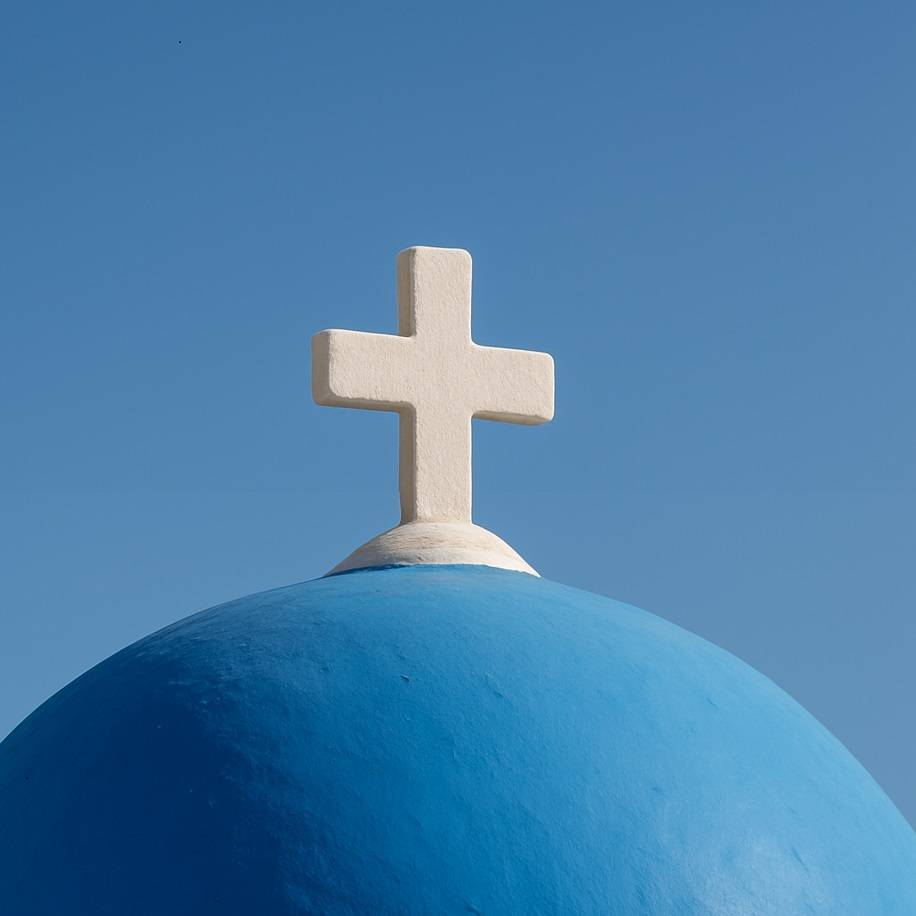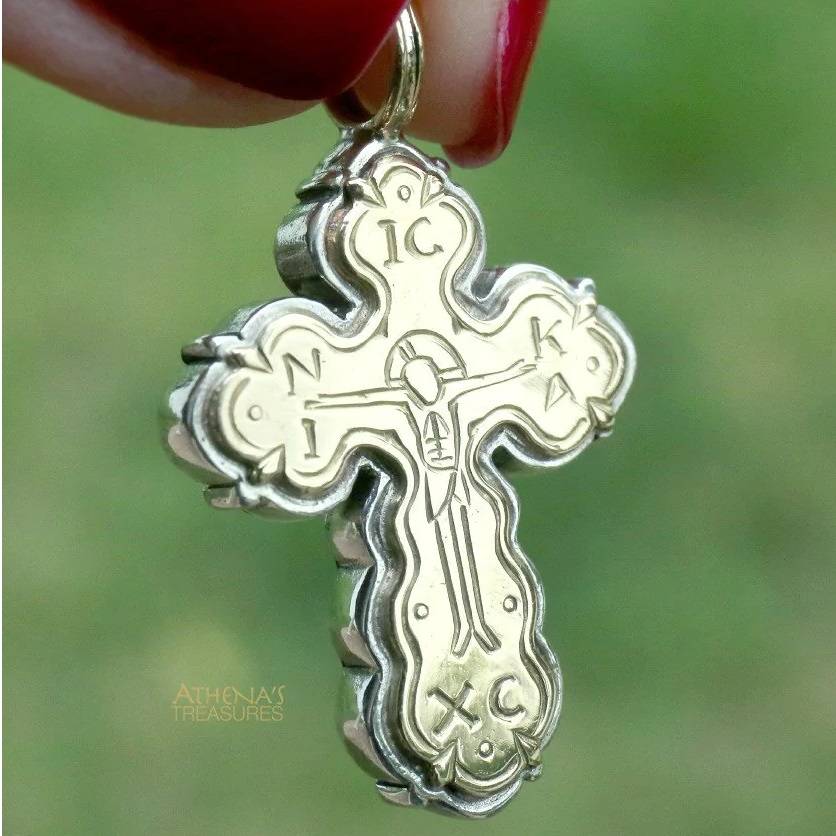Byzantine style is characterized by a fusion of classical Greek and Roman heritage with Christian themes and symbolism. Hallmarks of Byzantine art include:
Religious Focus: Sacred imagery dominated—icons, mosaics, frescoes, and illuminated manuscripts were created primarily to inspire devotion.
Symbolism over Naturalism: Figures were often stylized and frontal, emphasizing spiritual presence rather than lifelike realism.
Lavish Materials: Gold, enamel, ivory, and precious stones were frequently used, especially in mosaics, icons, jewelry, and church decoration.
Architectural Masterpieces: Buildings like Hagia Sophia showcased soaring domes, intricate mosaics, and light-filled spaces designed to convey the divine.
Why were crosses so important in Byzantine jewelry?
The Byzantine cross pendant became one of the most powerful expressions of Christian faith. Many designs included sacred symbols within the cross, turning each piece into both jewelry and devotion.
How does Athena Gaia connect to this tradition?












